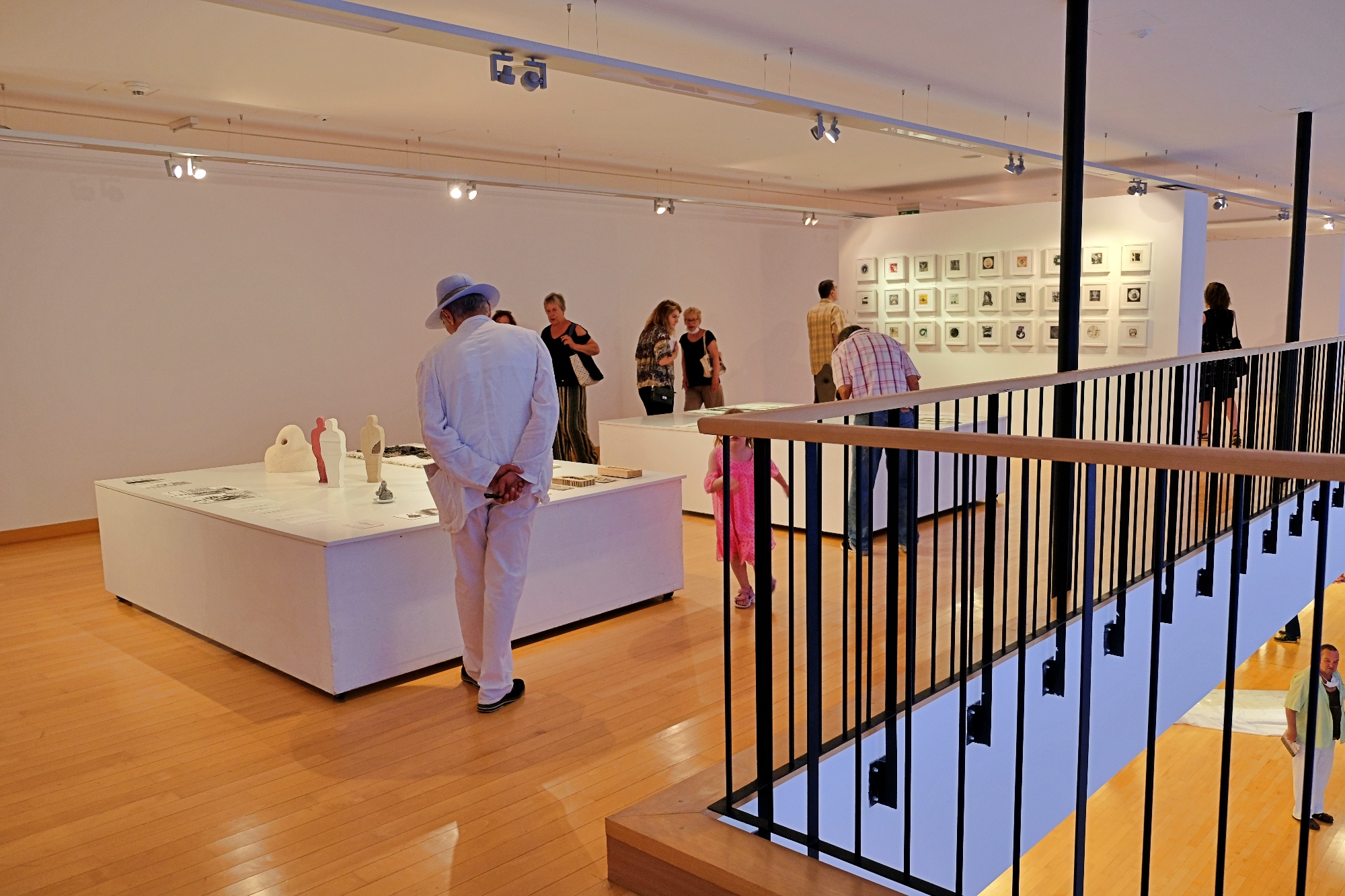
Shape, Gesture and Trace
/with sculptor Hana Lukas Midžić
_______________________________________
Vasko Lipovac University Art Gallery, Split, Croatia
17th July - 31st July 2020
Shape, Gesture and Trace
/with sculptor Hana Lukas Midžić
_______________________________________
Vasko Lipovac University Art Gallery, Split, Croatia
17th July - 31st July 2020
"Shape, gesture and trace", Vasko Lipovac University Art Gallery, Split, Croatia/ with sculptor Hana Lukas Midžić
What can change the nature of a man?
What can change the nature of a man?
What is actually this human nature? And to what extent it is linked to the corporeality? How can we possibly define a 'complete' man? Where is the line between the physical and the mental? What are the secrets hiding underneath the visible cerebral cortex? Where are those 'in front' and 'behind' and do they exist at all? What's their relationship like?
Are we actually the so-called 'inverse cripples'? That is what the redefined prophet Zarathustra called the man in the Nietzsche's most famous work, with the prophet regretting that he had never met a complete human being, only people who stand out for their achievements, but are actually weak and burdened by their past. I ask all the previous questions on impulse, by having a quick check of the volume and surface which make the constituent parts of this exhibition.
The hollow or transparent human shells, filled with nothing concrete or significant, the viscera and the brain represented in the same way as though there is no significant difference between them, followed by the dilution of each matter and form and entering a vision, where the expected patterns from reality mix with the ones where some codes that may seem undefined and illegible at first, as well as the products of abstract imagination, have an impact on reality, creating a contrast and a collision between the completely opposite achromatic colors dominating the space.
One might say that the two artists, Hana Lukas Midžić, an academic sculptor, and Ivana Gagić Kičinbači, an academic graphic artist and painter, have concisely, skillfully and precisely dissected the drama of human existence, in a way so as to have the aforesaid impressions somehow ended up first on the operating table. His goal seems to be to conclude how 'complete' we are, or we will be someday. How to look forward to the complete future with no such dark clouds and dead weight, if our present and our past present an immovable obstacle that just sort of 'happened' and disturbs our joyful expectation?
What is actually this human nature? And to what extent it is linked to the corporeality? How can we possibly define a 'complete' man? Where is the line between the physical and the mental? What are the secrets hiding underneath the visible cerebral cortex? Where are those 'in front' and 'behind' and do they exist at all? What's their relationship like?
Are we actually the so-called 'inverse cripples'? That is what the redefined prophet Zarathustra called the man in the Nietzsche's most famous work, with the prophet regretting that he had never met a complete human being, only people who stand out for their achievements, but are actually weak and burdened by their past. I ask all the previous questions on impulse, by having a quick check of the volume and surface which make the constituent parts of this exhibition.
The hollow or transparent human shells, filled with nothing concrete or significant, the viscera and the brain represented in the same way as though there is no significant difference between them, followed by the dilution of each matter and form and entering a vision, where the expected patterns from reality mix with the ones where some codes that may seem undefined and illegible at first, as well as the products of abstract imagination, have an impact on reality, creating a contrast and a collision between the completely opposite achromatic colors dominating the space.
One might say that the two artists, Hana Lukas Midžić, an academic sculptor, and Ivana Gagić Kičinbači, an academic graphic artist and painter, have concisely, skillfully and precisely dissected the drama of human existence, in a way so as to have the aforesaid impressions somehow ended up first on the operating table. His goal seems to be to conclude how 'complete' we are, or we will be someday. How to look forward to the complete future with no such dark clouds and dead weight, if our present and our past present an immovable obstacle that just sort of 'happened' and disturbs our joyful expectation?
What is actually this human nature? And to what extent it is linked to the corporeality? How can we possibly define a 'complete' man? Where is the line between the physical and the mental? What are the secrets hiding underneath the visible cerebral cortex? Where are those 'in front' and 'behind' and do they exist at all? What's their relationship like?
Are we actually the so-called 'inverse cripples'? That is what the redefined prophet Zarathustra called the man in the Nietzsche's most famous work, with the prophet regretting that he had never met a complete human being, only people who stand out for their achievements, but are actually weak and burdened by their past. I ask all the previous questions on impulse, by having a quick check of the volume and surface which make the constituent parts of this exhibition.
The hollow or transparent human shells, filled with nothing concrete or significant, the viscera and the brain represented in the same way as though there is no significant difference between them, followed by the dilution of each matter and form and entering a vision, where the expected patterns from reality mix with the ones where some codes that may seem undefined and illegible at first, as well as the products of abstract imagination, have an impact on reality, creating a contrast and a collision between the completely opposite achromatic colors dominating the space.
One might say that the two artists, Hana Lukas Midžić, an academic sculptor, and Ivana Gagić Kičinbači, an academic graphic artist and painter, have concisely, skillfully and precisely dissected the drama of human existence, in a way so as to have the aforesaid impressions somehow ended up first on the operating table. His goal seems to be to conclude how 'complete' we are, or we will be someday. How to look forward to the complete future with no such dark clouds and dead weight, if our present and our past present an immovable obstacle that just sort of 'happened' and disturbs our joyful expectation?
Starting with Hana, the first step was to expose and divest such approximate people in a way for us to wonder if she merely separated something that was wrapped using some sort of a taxidermic procedure around a hollow object. Moreover, one can see the bloodstream, the digestive system and the brain sticking out from such cavities, being 'sliced' and exposed to the gaze of the visitors and distributed throughout the Art Gallery, with the transparency of the pseudo organs practically leaving the same impression as the remaining void or cavity we find inside such anthropomorphic forms. Does that suggest the transience and insignificance of such persons who are so vulnerable and exposed to others, with all the weaknesses stemming from their physical structure? Perhaps the lack of intellectual, emotional or spiritual capacities? Or, at best, the instability of character and substance with their nonexistence in the worst-case scenario? Perhaps. Perhaps we should go further and adjust or change the frequency.
By travelling further towards the interior, the flat embossed surfaces of such approximate people and organs are further compressed, squeezed into the two dimensions where the perception of reality gets reduced from the approximately real to the approximately unreal, which is the main feature of Ivana's works of art. It can be concluded that Ivana's works of art could be exactly the materialized projection of what is located, what could or should be located in Hana's hollow anthropomorphic shells or in the apparently inconstant and yet the same tubular digestive and cerebral systems. The curvy lines presented in some of Ivana's works of art can be the content of such simulated organs, the sensitive content of the intestine, the blood-stream, as well as the product of our brain convolutions because they complement each other as though they were part of the same body before the performed surgery, but this is just the most obvious association of ideas. By further combining and assembling of blocks other forms present at the exhibition can be filled as well. In the engravings and prints, a play of light and dark shades is created, with the opposing white surface with an occasional addition of yellow cells and some sort of halos providing in some of her works the reflection of the religious symbolism and thus of the entire faith notion code. The light and the dark, the achromatism of shades from black towards the white evoke a specific dualism, something that is not only visually contrasting, but may indicate specific moral contrasts of the traditional notion of good and evil.
As such, the very imprint, not including merely the 'craft' one, but the mental one, as well, where the religiousness, the spirituality, the perception of light and dark, the suffering of the will longing for redemption and the future in which we are not inverse' or upside down anymore.
Starting with Hana, the first step was to expose and divest such approximate people in a way for us to wonder if she merely separated something that was wrapped using some sort of a taxidermic procedure around a hollow object. Moreover, one can see the bloodstream, the digestive system and the brain sticking out from such cavities, being 'sliced' and exposed to the gaze of the visitors and distributed throughout the Art Gallery, with the transparency of the pseudo organs practically leaving the same impression as the remaining void or cavity we find inside such anthropomorphic forms. Does that suggest the transience and insignificance of such persons who are so vulnerable and exposed to others, with all the weaknesses stemming from their physical structure? Perhaps the lack of intellectual, emotional or spiritual capacities? Or, at best, the instability of character and substance with their nonexistence in the worst-case scenario? Perhaps. Perhaps we should go further and adjust or change the frequency.
By travelling further towards the interior, the flat embossed surfaces of such approximate people and organs are further compressed, squeezed into the two dimensions where the perception of reality gets reduced from the approximately real to the approximately unreal, which is the main feature of Ivana's works of art. It can be concluded that Ivana's works of art could be exactly the materialized projection of what is located, what could or should be located in Hana's hollow anthropomorphic shells or in the apparently inconstant and yet the same tubular digestive and cerebral systems. The curvy lines presented in some of Ivana's works of art can be the content of such simulated organs, the sensitive content of the intestine, the blood-stream, as well as the product of our brain convolutions because they complement each other as though they were part of the same body before the performed surgery, but this is just the most obvious association of ideas. By further combining and assembling of blocks other forms present at the exhibition can be filled as well. In the engravings and prints, a play of light and dark shades is created, with the opposing white surface with an occasional addition of yellow cells and some sort of halos providing in some of her works the reflection of the religious symbolism and thus of the entire faith notion code. The light and the dark, the achromatism of shades from black towards the white evoke a specific dualism, something that is not only visually contrasting, but may indicate specific moral contrasts of the traditional notion of good and evil.
As such, the very imprint, not including merely the 'craft' one, but the mental one, as well, where the religiousness, the spirituality, the perception of light and dark, the suffering of the will longing for redemption and the future in which we are not inverse' or upside down anymore.
... (more on desktop version of the website)
However, is this the secret to the first clue to understanding some deeper biopsy at the subatomic level of existence? Is this the key to perceive the world in which the physical aspect is not the one that matters too much, nor the daily, almost routine obstacles, problems and hardships? As though these are perhaps hollow, transparent and superficial, while the light, vitality and some higher cosmic laughter are hidden underneath, just waiting to get out of the sarcophagus inside of which it is currently compressed and invisible to the eye. If we insert the entire gallery collection displayed at the exhibition into the inversion system of values mentioned at the beginning of the foreword, is the space in this case a moment captured and embalmed which is in fact the starting point for the inverse autopsy of the inverse cripple'? In this way, the very selection of the lighting installation illuminating the external surface from within may suggest that all these dark cells, curves and forms, both the figurative and the abstract ones, are the pure surface that, when peeled, irradiates the same light hidden underneath the thin layer of dark surfaces. Someone's hand may peel them, maybe our own hand, the hand of a friend, a beloved one, a family member, a wise tutor, perhaps someone or something bigger than ourselves? With such reasoning and getting back to the starting point, perhaps all the said external corporeality has been simplified, appearing as a silhouette that is sometimes transparent because it is only of third-rate importance, so it has not been given further consideration. While the things that matter are located in the interspace, in between the skin cells, somewhere inside the extra spatial dimension located between the forehead and the nape and is therefore always invisible to us, inside the dimension of mystified symbols, of seemingly real and approximately unreal cells which require a password that only the chosen ones can successfully decode, because otherwise they would remain shrouded in mystery, possibly forever. A single visit to the specific frozen moment in which someone's corporeality is dissected is not enough to reveal the real, inner nature of a person that may be eluding us all our life. At the very most, only the introduction is successful, requiring time and effort, and often caring, as well, that help us eliminate the traces of a cataract covering the lighting installation, actually, no, the light and the happiness. There is one thing certain, namely, that this exhibition arises a number of questions of with this foreword consisting of many of them. The answers may be found in the analysis, the selection or the cross-comparison of the very questions serving as a sort of guides on a journey from the impression to further reflection.
Ivor Igrec
However, is this the secret to the first clue to understanding some deeper biopsy at the subatomic level of existence? Is this the key to perceive the world in which the physical aspect is not the one that matters too much, nor the daily, almost routine obstacles, problems and hardships? As though these are perhaps hollow, transparent and superficial, while the light, vitality and some higher cosmic laughter are hidden underneath, just waiting to get out of the sarcophagus inside of which it is currently compressed and invisible to the eye. If we insert the entire gallery collection displayed at the exhibition into the inversion system of values mentioned at the beginning of the foreword, is the space in this case a moment captured and embalmed which is in fact the starting point for the inverse autopsy of the inverse cripple'? In this way, the very selection of the lighting installation illuminating the external surface from within may suggest that all these dark cells, curves and forms, both the figurative and the abstract ones, are the pure surface that, when peeled, irradiates the same light hidden underneath the thin layer of dark surfaces. Someone's hand may peel them, maybe our own hand, the hand of a friend, a beloved one, a family member, a wise tutor, perhaps someone or something bigger than ourselves? With such reasoning and getting back to the starting point, perhaps all the said external corporeality has been simplified, appearing as a silhouette that is sometimes transparent because it is only of third-rate importance, so it has not been given further consideration. While the things that matter are located in the interspace, in between the skin cells, somewhere inside the extra spatial dimension located between the forehead and the nape and is therefore always invisible to us, inside the dimension of mystified symbols, of seemingly real and approximately unreal cells which require a password that only the chosen ones can successfully decode, because otherwise they would remain shrouded in mystery, possibly forever. A single visit to the specific frozen moment in which someone's corporeality is dissected is not enough to reveal the real, inner nature of a person that may be eluding us all our life. At the very most, only the introduction is successful, requiring time and effort, and often caring, as well, that help us eliminate the traces of a cataract covering the lighting installation, actually, no, the light and the happiness. There is one thing certain, namely, that this exhibition arises a number of questions of with this foreword consisting of many of them. The answers may be found in the analysis, the selection or the cross-comparison of the very questions serving as a sort of guides on a journey from the impression to further reflection.
Ivor Igrec
Ivor Igrec
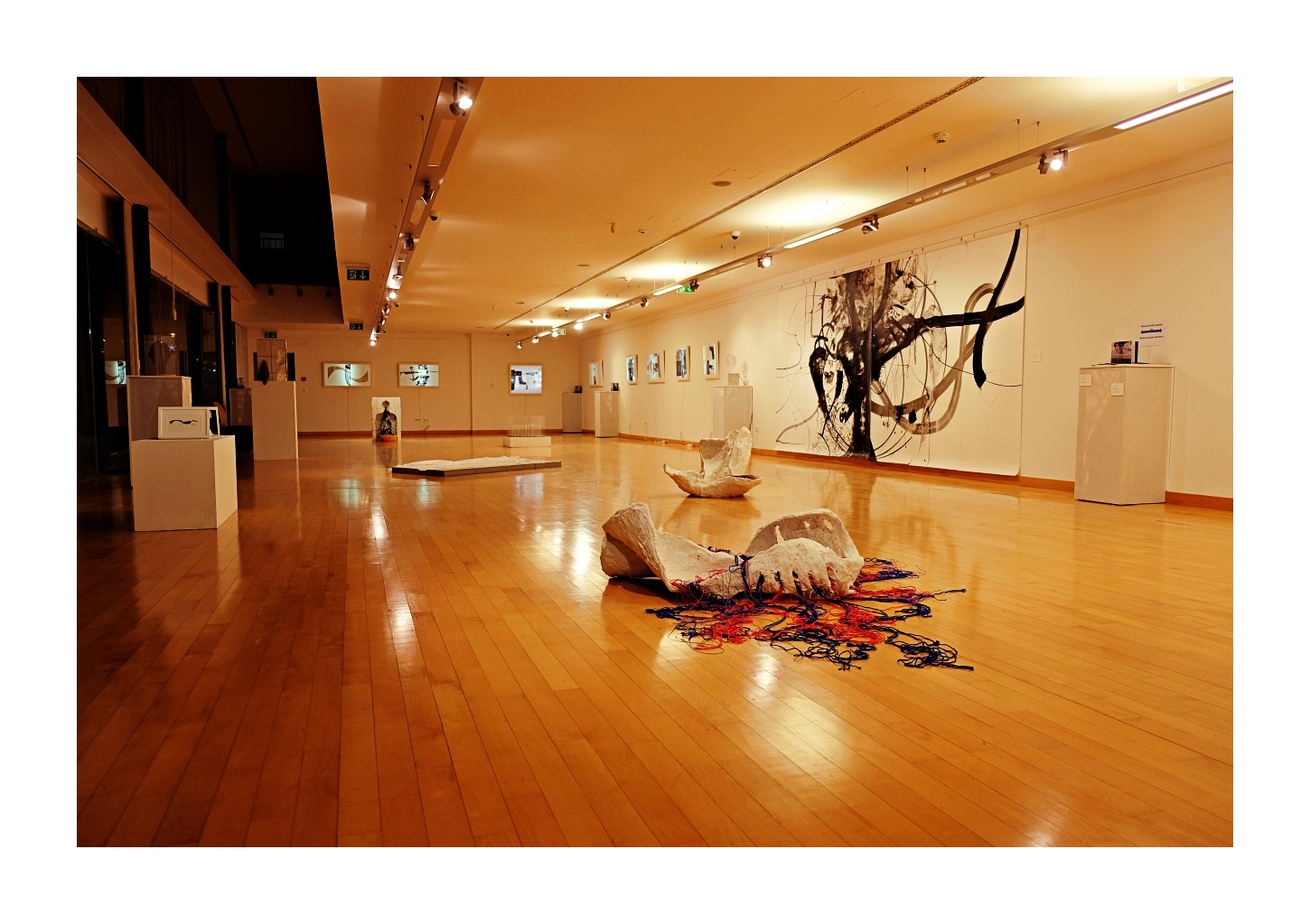
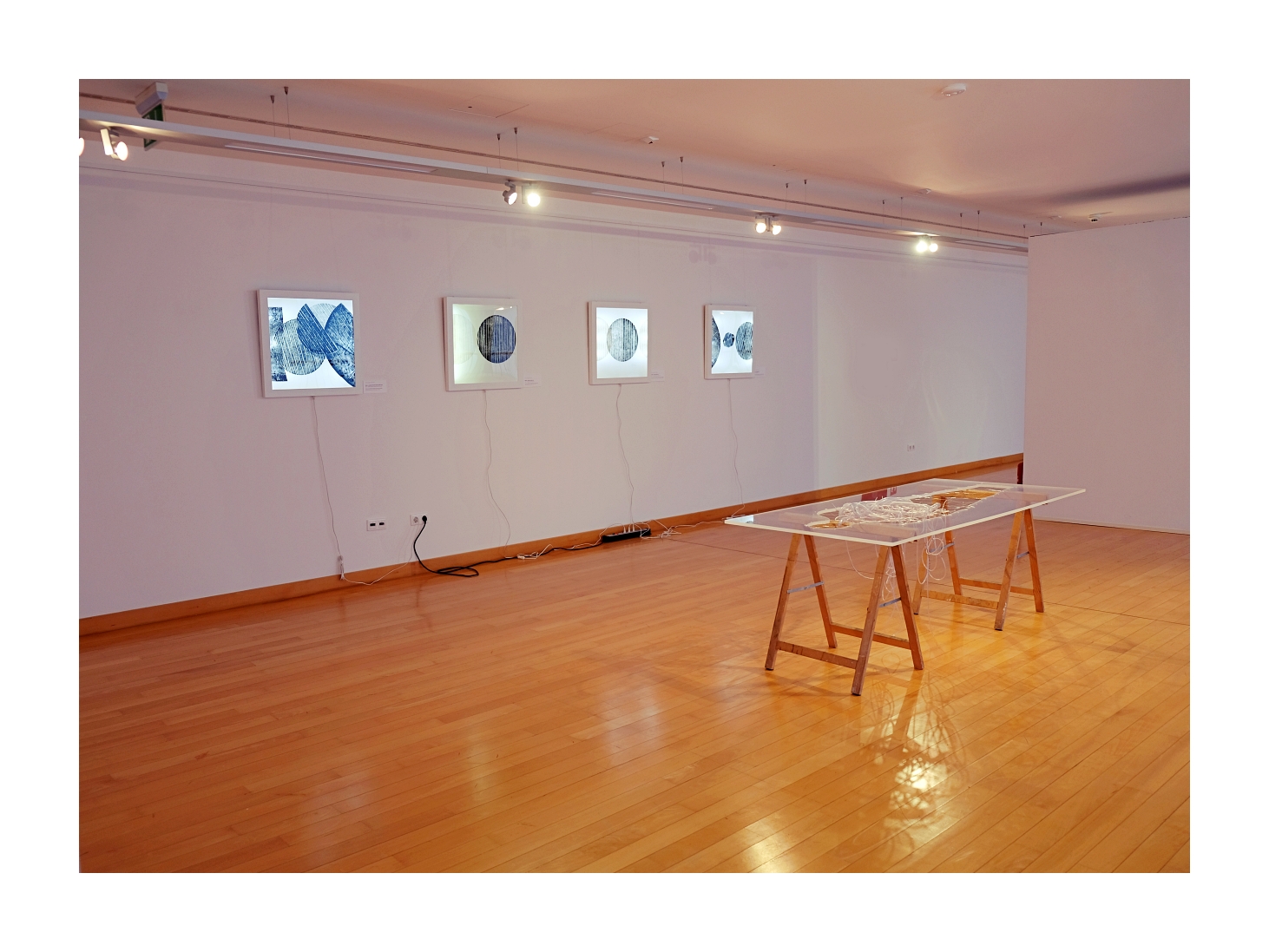
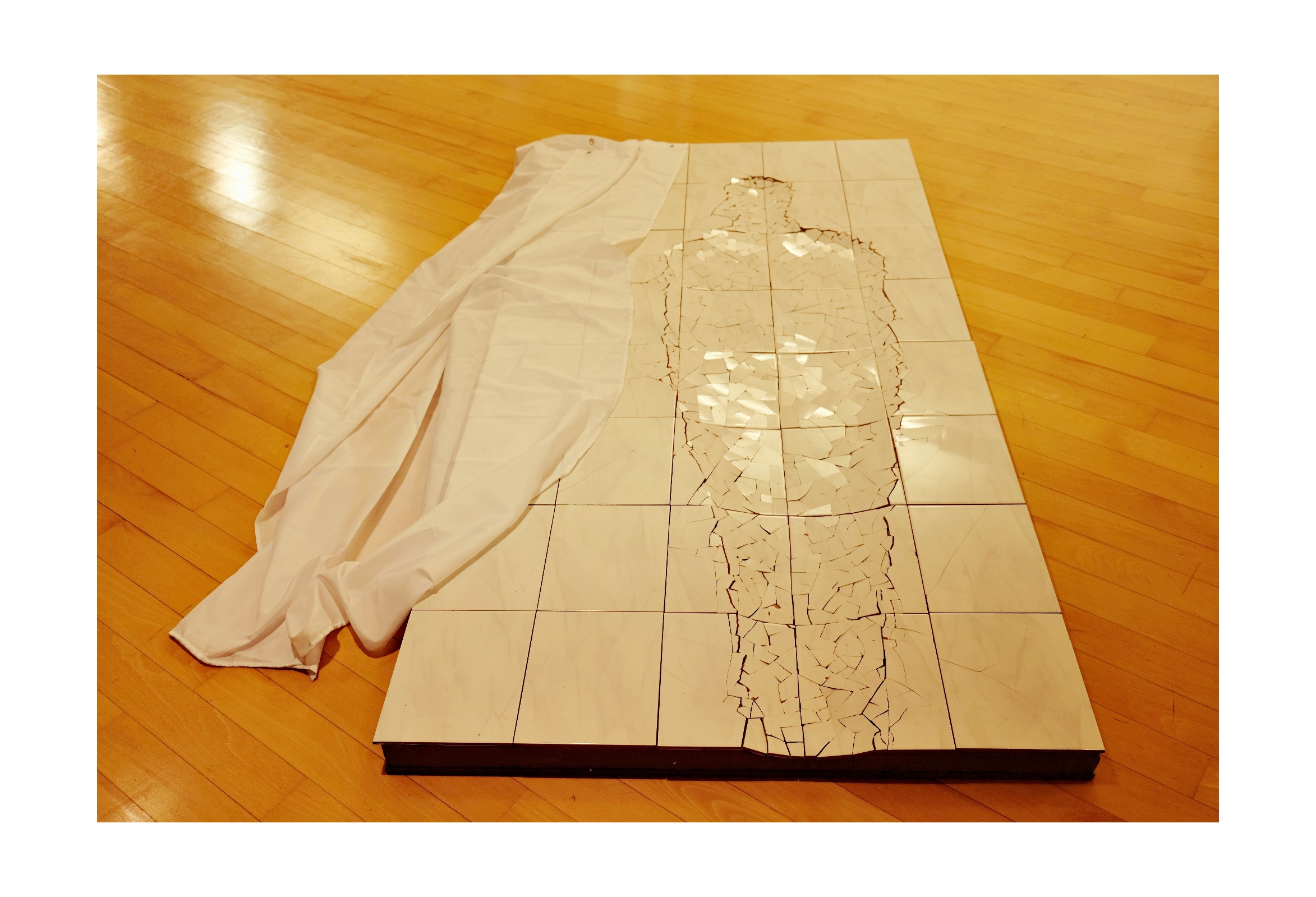
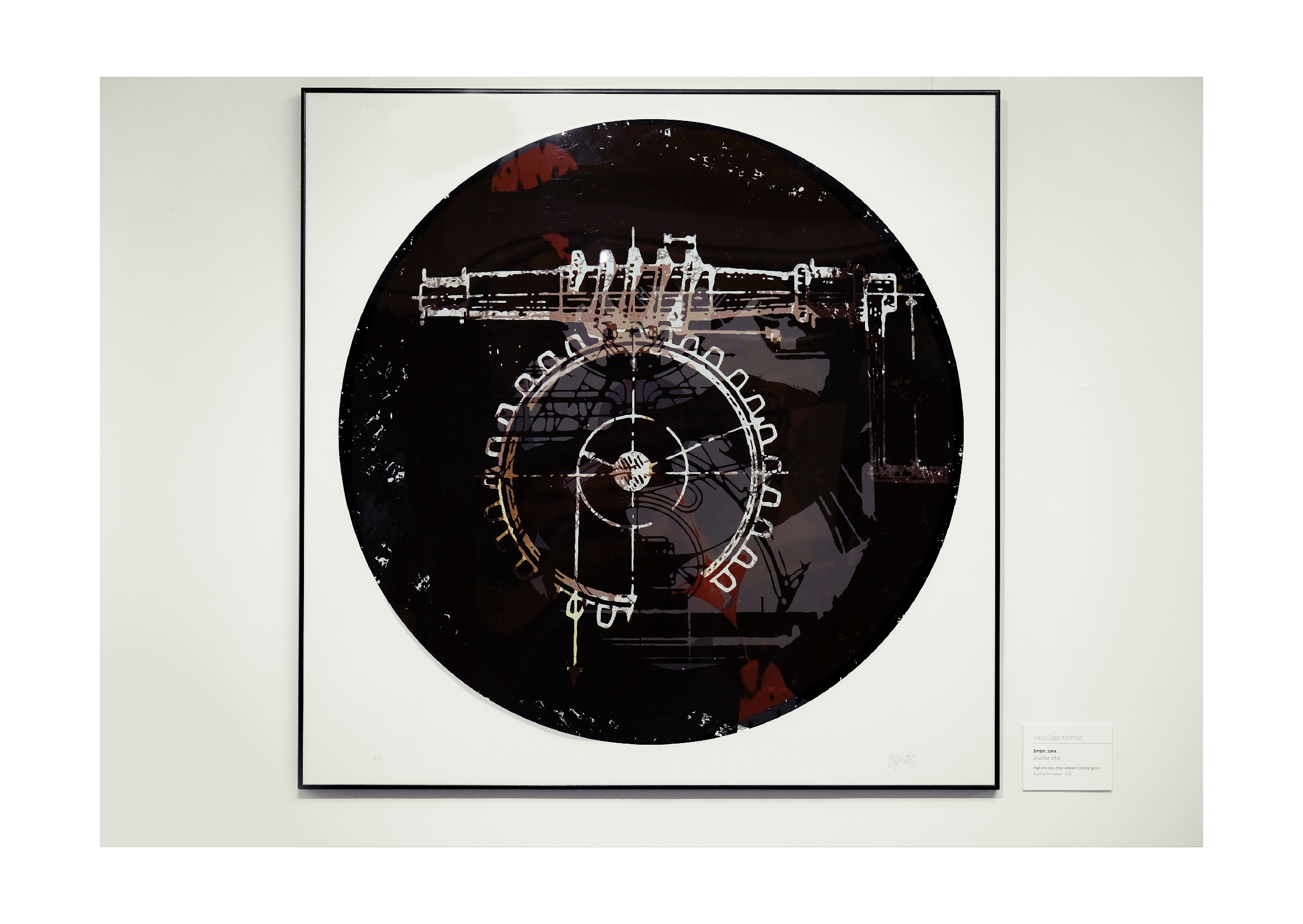

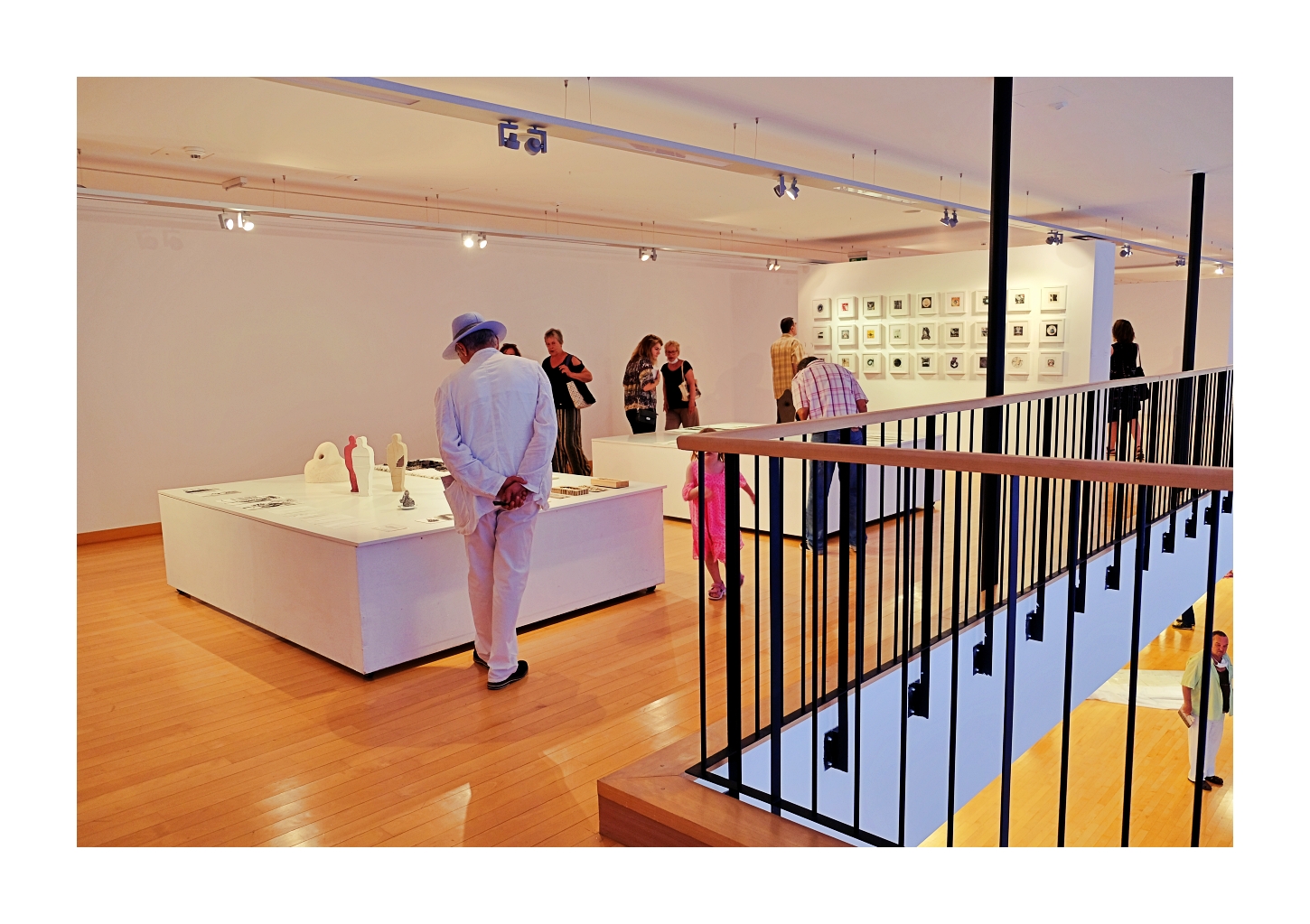
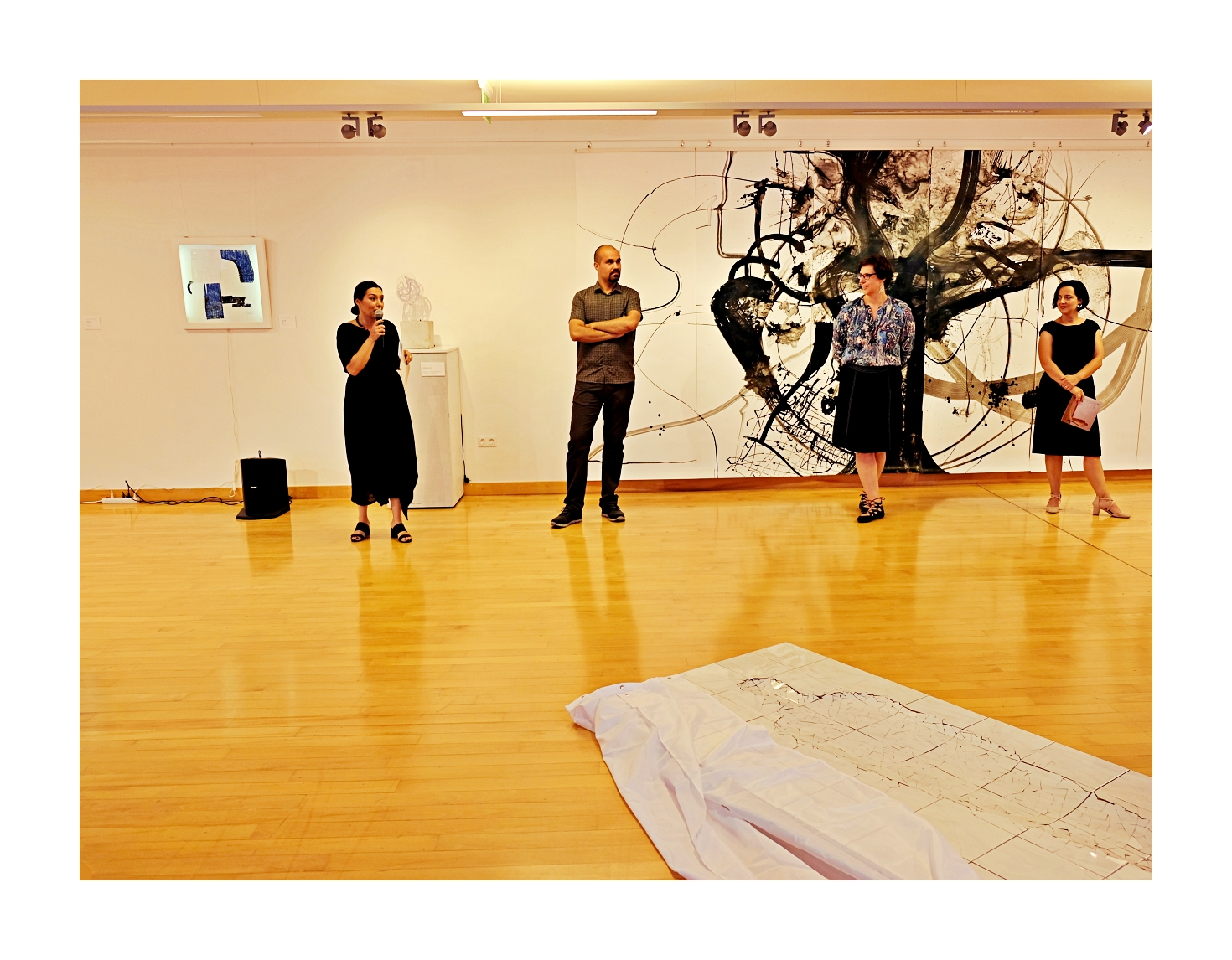
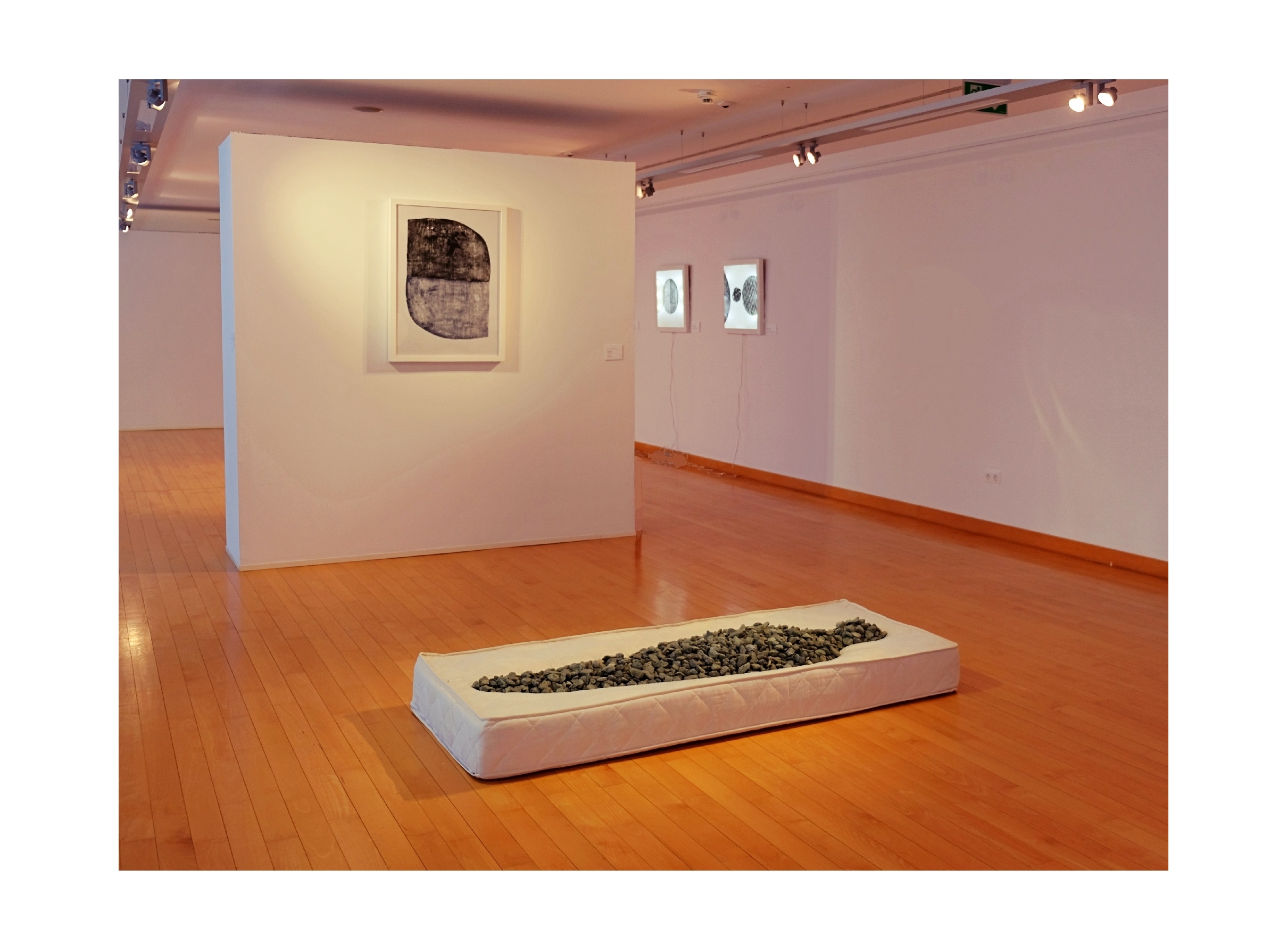
Vasko Lipovac University Art Gallery, Split, Croatia, 17th July - 31st July 2020
Vasko Lipovac University Art Gallery, Split, Croatia, 17th July - 31st July 2020
Vasko Lipovac University Art Gallery
Split, Croatia, 17th July - 31st July 2020